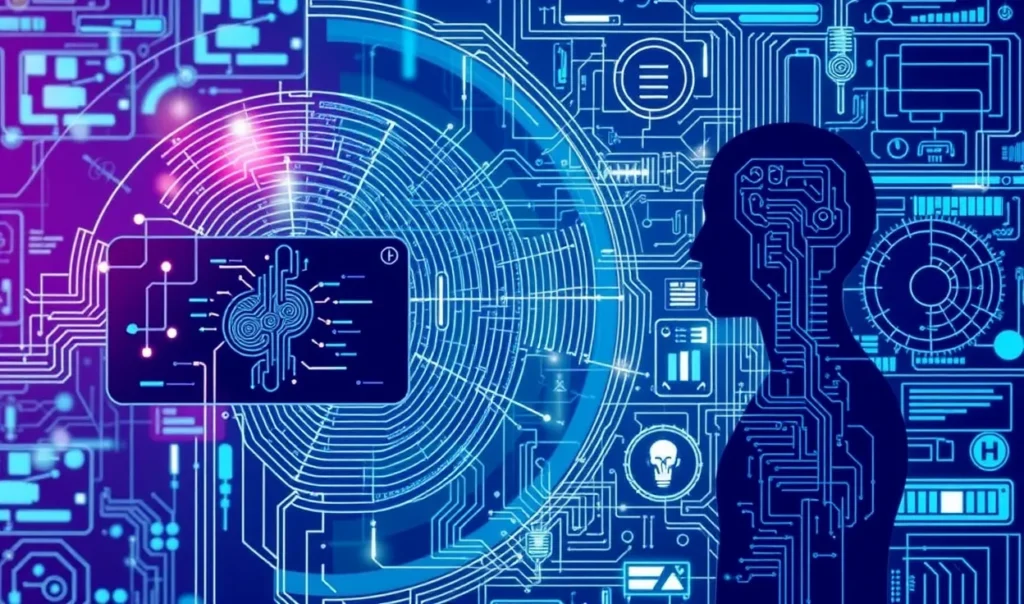
What Are Behavioral Biometrics?
Introduction to Behavioral Biometrics
Behavioral biometrics measures how you do things rather than focusing on who you are physically. These systems analyze patterns in your actions, such as typing, walking, or speaking, to verify your identity.
Unlike fingerprint scans or face recognition, which rely on static physical features, behavioral biometrics are dynamic and adapt as your behavior evolves.
How It Differs from Physical Biometrics
While physical biometrics, like fingerprints, iris scans, or facial recognition, are based on unique, fixed attributes, behavioral biometrics assess patterns over time. For instance, even if you use someone else’s phone, your typing rhythm might differ enough to alert the system. This dynamic aspect offers a second layer of security, reducing the risk of forgery or theft.
Common Use Cases in Authentication
From banking apps to workplace security systems, behavioral biometrics are gaining traction in identity verification processes. By tracking patterns unique to each individual, businesses can prevent unauthorized access without requiring intrusive scans or lengthy verifications.
Key Behavioral Biometric Features
Typing Patterns and Keystroke Dynamics
Ever noticed your unique typing rhythm? Systems can measure typing speed, press-release timing, and common typing errors to build a behavioral profile. Keystroke dynamics are especially effective in multi-factor authentication for online banking or enterprise platforms.
Gait Recognition and Movement Tracking
Gait recognition focuses on how you walk—your stride length, pace, and even foot pressure. This biometric can be used in wearable devices or surveillance systems to identify individuals from afar, adding another layer of passive security.
Voice Recognition and Speech Patterns
Voice-based systems analyze pitch, tone, and rhythm in your speech. These are often integrated into virtual assistants like Alexa or Siri and serve as a personalized, convenient form of security. Voice biometrics can also detect emotional cues, enhancing user interaction with tech devices.
How Behavioral Biometrics Work
Data Collection and Analysis Methods
Behavioral biometrics work by collecting data from sensors, devices, or systems that track user actions. For example, your smartphone might track swiping speed or tapping patterns to differentiate you from others. This raw data is then converted into a behavioral profile.
Machine Learning in Behavioral Recognition
Machine learning algorithms are key to recognizing and analyzing behavioral patterns. By training on vast datasets, they learn to differentiate between legitimate behaviors and anomalies. Continuous updates make these systems smarter over time, minimizing false positives.
Comparing Profiles to Identify Anomalies
When you interact with a system, your behavior is continuously compared to the pre-built profile. Any deviation—like an unfamiliar typing pattern or slower gait—can trigger security alerts or require secondary authentication.
Applications in Real-World Scenarios
Enhancing Cybersecurity and Fraud Detection
Behavioral biometrics are a game-changer in preventing identity theft and online fraud. By detecting unusual behaviors, such as erratic mouse movements or atypical login times, these systems can flag potential threats in real time.
Use in Mobile Devices and Apps
Smartphones use behavioral biometrics to simplify security. Features like unlocking through gestures or analyzing touchscreen interactions make user authentication seamless while maintaining robust security.
Behavioral Biometrics in Healthcare
In healthcare, behavioral biometrics help monitor patients with neurological or motor impairments. For example, tracking walking patterns might detect early signs of diseases like Parkinson’s, enabling earlier interventions.
Advantages and Challenges
Benefits of Behavioral Biometrics Over Physical Methods
Behavioral systems offer a non-intrusive and passive approach to authentication. Unlike passwords or physical scans, they adapt over time and don’t require user intervention. This makes them ideal for continuous security monitoring.
Privacy Concerns and Ethical Implications
As behavioral data becomes more integral to security, concerns about data misuse and privacy breaches grow. How do companies ensure user consent and data security? Striking this balance remains a critical challenge.
Technical Challenges and Solutions
One major hurdle is handling the variability in human behavior due to stress, injury, or environmental changes. Advanced algorithms, combined with multi-factor approaches, are paving the way for more resilient systems.
The Role of Artificial Intelligence in Behavioral Biometrics

AI’s Impact on Accuracy and Efficiency
Artificial intelligence is the backbone of behavioral biometrics, enabling systems to process vast amounts of data with precision. AI algorithms identify intricate patterns in user behavior, whether it’s subtle changes in typing speed or minor variations in voice pitch. This level of accuracy significantly reduces false positives, making authentication smoother for legitimate users.
Continuous Learning for Evolving Behaviors
Human behavior isn’t static—it changes over time due to factors like mood, age, or environment. AI systems continuously learn and adapt to these changes, updating behavioral profiles in real time. This ensures that authentication remains reliable, even when your patterns shift slightly.
Reducing False Positives with AI Models
One common challenge in biometrics is the occurrence of false positives, where legitimate users are flagged as threats. AI mitigates this by employing deep learning models that assess contextual data—like device usage history or location—alongside behavioral patterns.
Behavioral Biometrics and Multi-Factor Authentication
Combining Behavioral and Physical Biometrics
Behavioral biometrics are most effective when paired with physical factors, such as fingerprint scans or facial recognition. This multi-factor approach strengthens security, ensuring that even if one layer is compromised, the other can compensate.
Use Cases in High-Security Environments
In high-stakes industries like finance or defense, multi-factor authentication using behavioral biometrics is invaluable. For example, a financial system might require both a voice signature and verified typing patterns to approve a large transaction.
How Behavioral Factors Add Extra Layers of Protection
By analyzing how users interact with systems—such as their mouse movement patterns or smartphone swipes—behavioral biometrics create an additional security layer. This makes it nearly impossible for attackers to replicate both physical and behavioral traits.
Ethical and Privacy Implications
Data Ownership and User Consent
A significant concern with behavioral biometrics is the question of who owns the data. Unlike passwords, behavioral patterns are deeply personal. Ensuring that users have control over their data is critical for maintaining trust in these systems.
Mitigating Risks of Behavioral Data Misuse
Misuse of behavioral data, such as unauthorized tracking or profiling, is a growing risk. Companies must implement robust encryption protocols and restrict data usage to prevent breaches or exploitation. Transparent policies can help alleviate user concerns.
Ethical Guidelines and Regulations
Governments and organizations are working to establish ethical frameworks for biometrics. Regulations like the General Data Protection Regulation (GDPR) mandate that companies secure user consent before collecting or processing behavioral data. Compliance with such laws is crucial for ethical adoption.

Industries Leading the Adoption of Behavioral Biometrics
Financial Services and Banking
Banks were among the first to adopt behavioral biometrics, using them to combat fraudulent transactions. For instance, behavioral analysis can detect when a fraudster attempts to mimic a legitimate user’s login behavior.
E-Commerce and Digital Platforms
E-commerce giants like Amazon are leveraging behavioral biometrics to secure online payments. By analyzing how customers interact with their websites, these platforms can flag unusual activity without interrupting user experiences.
Government and Law Enforcement Applications
Governments use behavioral biometrics for border control, surveillance, and forensic investigations. For example, gait analysis can help identify suspects in crowded public spaces, offering a discreet and effective tracking method.
Future Trends in Behavioral Biometrics
Advances in Wearable and IoT Devices
The integration of behavioral biometrics into wearables like smartwatches or fitness trackers is on the rise. These devices monitor walking patterns, heart rates, and other behaviors to offer real-time authentication.
Integrating Behavioral Biometrics with AI and Blockchain
Combining AI with blockchain technology could revolutionize data security in biometrics. Blockchain ensures that behavioral data remains decentralized and tamper-proof, addressing privacy concerns while improving trust.
Potential for Hyper-Personalized Security Systems
As behavioral biometrics evolve, we’re moving towards security systems tailored to individual behaviors. Imagine a phone that unlocks only when it recognizes your unique way of swiping, typing, and speaking—all working seamlessly together.
Behavioral Biometrics in Smart Cities
Enhancing Urban Security Through Behavioral Monitoring
Smart cities are integrating behavioral biometrics to improve public safety and urban management. By analyzing movement patterns in crowded areas, authorities can quickly detect suspicious activity, like loitering near sensitive locations. These systems provide a proactive approach to urban security, reducing response times.
Public Surveillance and Anomaly Detection
Behavioral biometrics in surveillance systems can identify anomalies, such as erratic walking or unusual gestures. For example, gait analysis might alert law enforcement to someone carrying a concealed weapon. While this boosts security, it also raises questions about constant surveillance and personal freedom.
Ethical Concerns in Public Behavioral Tracking
Using behavioral biometrics in public spaces poses significant ethical challenges. How do governments ensure that data collection respects individual privacy? Striking a balance between safety and civil liberties is critical to gaining public trust.
Behavioral Biometrics vs. Traditional Security Systems
Strengths of Behavioral Biometrics Over Static Systems
Traditional security methods, like passwords or PINs, can be easily compromised. In contrast, behavioral biometrics provide a dynamic and adaptive defense by focusing on unique user patterns. This makes them far harder to replicate or steal.
Scenarios Where Traditional Methods Fall Short
Passwords and tokens are ineffective in cases of phishing or social engineering attacks. Behavioral systems, however, flag suspicious activity even if an attacker has valid credentials, offering an extra line of defense.
Why Hybrid Systems May Be the Future
A combination of behavioral and traditional methods could offer the best of both worlds. For instance, pairing facial recognition with typing pattern analysis ensures a multi-layered approach to security that’s harder to bypass.
Limitations of Behavioral Biometrics
Handling Variability in Human Behavior
One challenge of behavioral biometrics is that human behavior is inconsistent. Stress, fatigue, or injury can alter patterns, leading to false positives or authentication failures. Designing systems to account for these variations remains an ongoing effort.
Impact of Environmental and Situational Factors
External factors, like network latency or device quality, can influence biometric readings. For example, a cracked screen might affect swipe patterns. Developers need to consider these variables when building reliable systems.
Challenges in Scaling Behavioral Systems
Scaling behavioral biometrics for global use requires significant computational power and resources. Additionally, standardizing behavioral data formats across industries is crucial for interoperability and seamless implementation.
How to Protect Your Behavioral Data
Tips for Users to Safeguard Their Biometrics
Users should choose platforms that are transparent about data handling and enforce robust encryption protocols. Avoid sharing sensitive behavior-linked data, such as recorded typing patterns or voice samples, with untrusted sources.
Ensuring Privacy Through Transparency
Organizations should clearly communicate how behavioral data is collected, stored, and used. Providing users with access to their data and allowing them to opt out ensures greater trust and compliance with privacy laws.
Importance of Choosing Secure Platforms
When adopting services that utilize behavioral biometrics, look for platforms that comply with regulations like GDPR or California Consumer Privacy Act (CCPA). These standards prioritize user privacy and data security.
Behavioral Biometrics: What Lies Ahead?
Next-Generation Innovations in the Field
Emerging technologies like neural interfaces and advanced wearables will revolutionize behavioral biometrics. These devices could monitor even more subtle patterns, such as brainwave activity, for precise authentication.
Broader Implications for Digital Identity
Behavioral biometrics could redefine the concept of digital identity, making it more dynamic and personalized. In the future, your behavior might replace traditional forms of ID, streamlining processes like travel or online shopping.
What to Expect in the Next Decade
Over the next decade, expect behavioral biometrics to integrate more deeply into daily life, from smart homes to autonomous vehicles. As the technology matures, its role in shaping secure, seamless, and personalized user experiences will grow exponentially.
Conclusion
Behavioral biometrics offers an innovative approach to authentication by focusing on how we move, type, and speak. As the technology evolves, it will play an increasingly vital role in enhancing security while adapting to user behavior. However, its growth hinges on addressing privacy concerns, ethical questions, and technical challenges. By striking the right balance, behavioral biometrics could transform the future of identity verification.
Resources
Academic Research and Journals
- IEEE Xplore: Access in-depth research papers on behavioral biometrics, such as gait analysis and keystroke dynamics.
Visit IEEE Xplore - SpringerLink: Explore academic articles focusing on the latest advancements in biometric technologies.
Visit SpringerLink
Industry Reports
- Gartner Research: Find industry reports and market trends about biometric technology and its real-world applications.
Visit Gartner - Grand View Research: Get market insights and statistics on the behavioral biometrics industry.
Visit Grand View Research
Government and Regulatory Resources
- National Institute of Standards and Technology (NIST): Learn about standards for implementing biometric security systems.
Visit NIST - European Union Agency for Cybersecurity (ENISA): Explore guidelines for securing biometric data under GDPR.
Visit ENISA
Technical Blogs and Websites
- Kaspersky Blog: Offers insights into cybersecurity trends, including behavioral biometrics for fraud prevention.
- Biometric Update: Stay updated on the latest news and breakthroughs in biometric technologies.
Visit Biometric Update
Books on Biometrics and AI
- “Biometric Technologies and Verification Systems” by John R. Vacca: A comprehensive guide on biometrics, including behavioral methods.
- “Introduction to Biometrics” by Anil K. Jain, Arun A. Ross, and Karthik Nandakumar: A detailed overview of biometric systems, including behavioral ones.
Open Source Tools and Projects
- OpenCV: A library for computer vision that can be used to develop biometric recognition systems.
Visit OpenCV - TensorFlow: A machine learning platform often used in building AI-driven behavioral biometrics.
Visit TensorFlow
Regulatory Guidelines
- GDPR Biometrics Guidance: Official guidelines on handling biometric data in compliance with GDPR.
Learn More About GDPR - California Consumer Privacy Act (CCPA): Information on biometric data rights under CCPA.